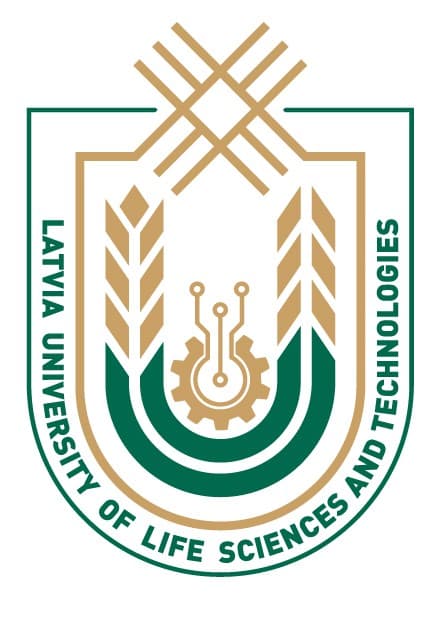References
- Ali, S., Hussain, S.A.,Tohir, M.Z.M. (2019). Fire Test and Effects of Fire Retardant on the Natural Ability of Timber: A Review. Pertanika Journal of Science and Technology 27(2), P 867 – 895.
- Bekhta, P., Bryn, O., Sedliačik, J., and Novák, I. (2016). Effect of different fire retardants on birch plywood properties, Acta Facultatis Xylologiae Zvolen 58(1), 59-66. DOI: 10.17423/afx.2016.58.1.07.
- Bryn, O., Bekhta, P., Sedliačik, J., Forosz, V., Galysh, V. (2016) The effect of diffusive impregnation of birch veneers with fire retardant on plywood properties. Bioresources 11(4). DOI: 10.15376/biores.11.4.9112-9125.
- Bukšāns, E., (2010). Different factor influence on fire safety of wood materials and prediction of the reaction to fire. Phd Theis, Latvia University of Agriculture. 127 pp.
- Demir, A., Aydin, I., Salca, E. (2017). Some Technological Properties of Plywood after Fire Retardant Treatment in Different Concentrations. PRO LIGNO Vol.13 N 2 2017. P 40-45.
- EC Commission decision 2007/348 of 15 May 2007 amending Decision 2003/43/EC establishing the classes of reaction-to-fire performance for certain construction products as regards wood-based panels, Official Journal of the European Union. Retrieved September 30, 2020, from https://eur-lex.europa.eu/eli/dec/2007/348/oj.
- EN 13238:2010, Reaction to fire tests for building products – Conditioning procedures and general rules for selection of substrates. CEN/TC 127 Fire safety in buildings.
- EN 13501-1:2018, Fire classification of construction products and building elements - Part 1: Classification using data from reaction to fire tests. CEN/TC 127 Fire safety in buildings.
- EN 13823:2010, Reaction to fire tests for building products - Building products excluding floorings exposed to the thermal attack by a single burning item, CEN/TC 127 Fire safety in buildings.
- EN ISO 11925-2:2020, Reaction to fire tests - Ignitability of products subjected to direct impingement of flame, CEN/TC 127 Fire safety in buildings.
- Fanfarová, A., Makovická Osvaldová, L., Gašpercová, S. (2016). Testing of Fire Retardants. Applied Mechanics and Materials Vol. 861, pp 72-79. DOI: 10.4028/www.scientific.net/AMM.861.72.
- Grexa, O. (2000). Flame retardant treated wood products. In: The proceedings of Wood and Fire safety (part one). Technical university of Zvolen. Zvolen, 2000.
- Hu, L., Chen, Z., Fu, F., Fan, M. (2015). Investigation of Factory Fire Retardant Treatment of Eucalyptus Plywood. Forest Products Journal 65(7-8). DOI: 10.13073/FPJ-D-14-00020.
- Jiang, J., Li, J., Hu, J., Fan, D. (2010). Effect of nitrogen phosphorus flame retardants on thermal degradation of wood. Construction and Building Materials Vol. 24, Issue 12, December 2010, Pages 2633-2637.10.1016/j.conbuildmat.2010.04.064
- Kristoffersen, B., Hansen, A. (2004). Using the cone calorimeter for screening and control testing of fire retarded treated wood products. In: Proceedings of 10th international conference Interflam 2004: Vol. 2. Interscience communications Ltd. London. P.1397-1408.
- LeVan, S.L. (1984). Chemistry of fire retardancy. In: Rowell, R. M. (ed.). The chemistry of solid wood: Vol. 207. American Chemical Society. Washington, 1984. P.531-574.
- LeVan, S.L., Collet, M. (1989). Choosing and applying fire retardant treated plywood and lumber for roof designs: General Technical Report FPL-GTR-62. U.S. Department of Agriculture, Forest Service, Forest Products Laboratory. Madison, 11 p. DOI: https://doi.org/10.2737/FPL-GTR-62.
- Liodakis, S., Vorisis, D., Agiovlasitis, I.P. (2006). Testing the retardancy of various inorganic chemicals on smoldering combustion of Pinus halepensis needles. Thermochimica Acta. 444(2), 157-165. DOI: https://doi.org/10.1016/j.tca.2006.03.010.
- Mariappan, T. (2017). Fire Retardant Coatings In Book: New Technologies in Protective Coatings, edited by Carlos Giudice, Chapter 6, DOI: 10.5772/67675.
- Miljković, J., Grmuša, I., Điporović, M., KačarevićPopović, Z. (2005). The influence of fire retardants on the properties of beech and poplar veneers and plywood. Glasnik Sumarskog fakulteta 2005(92). DOI: 10.2298/GSF0592111M.
- Östman, B., Tsantaridis, L., Mikkola, E., Hakkarainen, T., Belloni, K., Brumer, H., & Piispanen, P. (2006). Innovative eco-efficient high fire performance wood products for demanding applications: Final report for Vinnova-Tekes project InnoFireWood. SP Rapport, No. 30. Retrieved September 30, 2020, from http://virtual.vtt.fi/virtual/inno-firewood/finalreport/sp_rapp_2006_30_innofirewood.pdf.
- Seo, H. J., Hwang, W., and Lee, M. C. (2017). Fire properties of Pinus densiflora utilizing fire-retardant chemicals based on borated and phosphorus (I) – combustion characteristics, BioRes. 12(3), 5417-5427. DOI: 10.15376/biores.12.3.5417-5427.
- Zhang, J., Delichatsios, MA, McKee, M., Ukleja, S. (2012). Experimental and numerical study of burning behaviors of flaxboard with intumescent coating and nanoparticles in the cone calorimeter and single burning item tests. Fire and Materials. 2012; 36: P 554-564.
